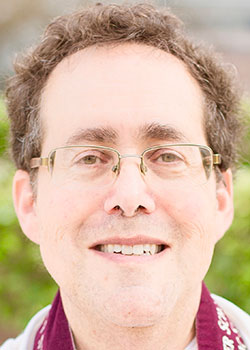Jews understand that ours is a religion that celebrates life. Our toast at a simcha, L’Hayim! means “To Life!”, and it expresses the love of this life that our faith inculcates. God said that creation is tov me’od, very good, and we Jews affirm God’s judgment by celebrating the gift of life each day and every moment.
Even as we rejoice at being alive, we also turn to our religion for solace and structure in our time of grief. During illness, Jewish tradition provides community and support through the mitzvah of bikkur holim, visiting the sick. With the death of a loved one, Jewish tradition offers loving guidance through deepest grief and a gradual return to the living, through the mitzvot of menachem aveilim and kavod ha-met, comforting mourners and providing dignity to the deceased. The wisdom of Jewish law is nowhere more apparent than in the way the traditional funeral affirms the reality of the loss while simultaneously offering hope and haven for the bereaved.
So we have a religion that focuses on life as a gift and as a celebration. And we expect our religion to walk with us in the valley of the shadow of death as well. Isn’t that a paradox? A religion of life for the moment of death? That paradox gets even more complex when you consider how little the Torah or the Tanakh speak of life after death (it’s there, it just isn’t mentioned much). And that paradox becomes positively enormous when you consider just how difficult the laws of the Torah make it for people to have contact with the dead.
Consider today’s parashah. In laying out the laws of tumah (unable to bring a sacrifice) and tohorah (able to bring a sacrifice) for the Israelites to follow, God tells Moses and Aaron “whoever touches one that is slain with a sword in the open field, or a dead body, or a bone of a man, or a grave, shall be tamei seven days.”
Now, to get a full sense of what that injunction entails, remember that the central religious event in an Israelite’s life was the ability to bring a sacrifice to the Temple. This was the final step in the process of teshuvah. After the Israelite had repented and rectified the wrong-doing and received the forgiveness of the aggrieved party, bringing a sacrifice was the way to free the altar from the taint of Israelite sin. God’s ability to dwell among the Israelites was preserved by the constant offering of sacrifices. To become tamei by touching a corpse was to no longer be able to bring those sacrifices, to no longer be able to participate in public communion with God. For a full seven days, the Israelite was cut off from worship with other Jews.
The separation of life and death, so apparent in this restriction, was even more severe for a kohen, a priest. The kohen was not permitted to become tamei, except for parents, siblings, and children (the rabbis understood the Torah as including the wife as well). Only in that case could a kohen participate in a funeral or a burial at all.
What makes this prohibition so striking is our expectation that our own clergy—our rabbi and our cantor—be there to comfort us and to assist us at the loss of our loved ones. The clergy of biblical antiquity were not allowed to participate in any way. Why not? And why would the Torah require us to become tamei upon contact with a corpse, including that of a loved one?
Two possibilities suggest themselves: the first is historical, and the second psychological. In the realm of history, the Torah was locked in ideological combat with the pagan idolatries of the ancient world. In Egypt, death was the end-all and be-all of religion, used to justify the oppressive misery of thousands of slaves. While Pharaohs and nobility literally worked people to death, they justified their brutality with the constant hype that Egyptian idolatry lavished on the afterlife. In contrast, the Torah wanted to insist that attaining paradise could not be on the backs of human suffering. Justice, piety, and righteousness in the here-and-now, is the certain road to Olam ha-ba, the Coming World. To fix the focus on how we live our lives now, God prohibits Israel’s clergy from participating in funerals in any way, and quarantines those Israelites who do so participate.
The second explanation, more psychological in nature, sees that quarantine as necessary for the well-being of the mourners. By being tamei for seven days, the mourner was forced to attend less to public worship and more toward contemplation and grief. Those seven days were to be devoted to the important work of mourning: to recognizing the loss that has occurred, mourning its finality, and building a new, inner relationship based on the abiding love that even death cannot destroy. By removing the mourner from the bustle of work and public ritual, the Torah wisely allows the mourner the resources necessary to begin recovery.
That same wisdom is needed today, and is embodied in the mitzvah of sitting Shivah. Rather than rushing back to chores, employment, or socializing, Judaism gives us a time out to regroup and to regain our strength.
The paradox of Judaism, then, is a religion that cherishes life and embraces life even in death.
Shabbat shalom.

